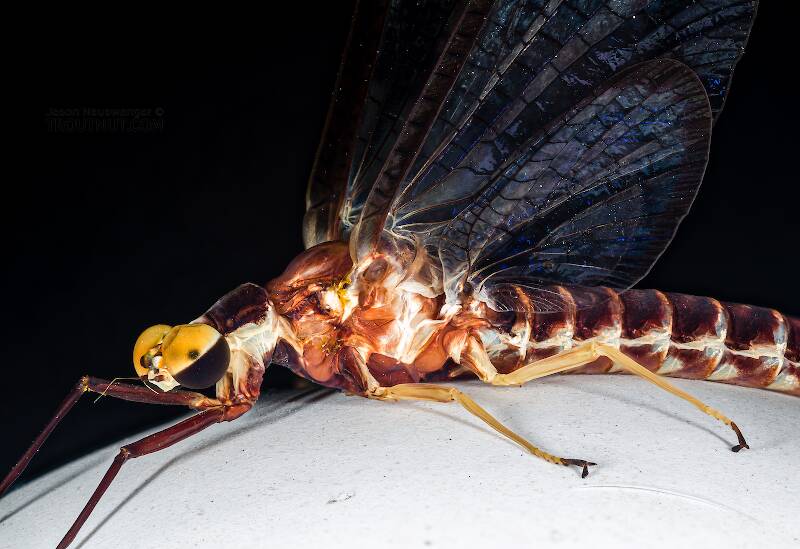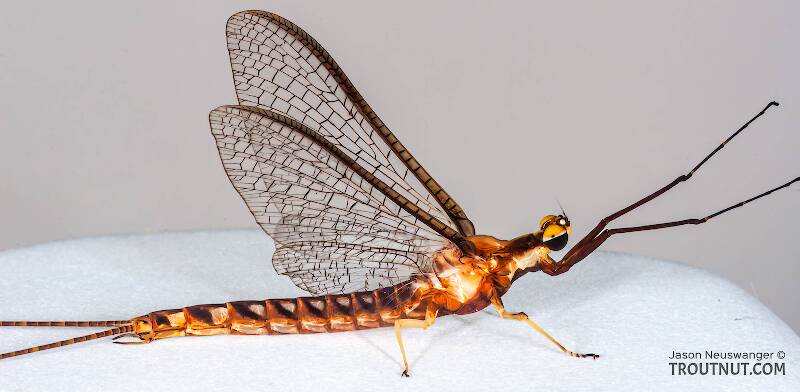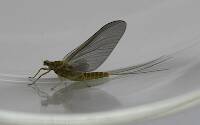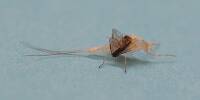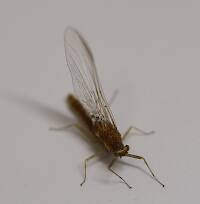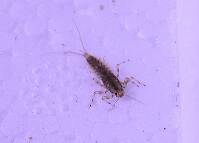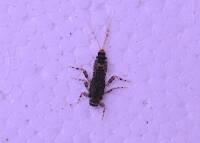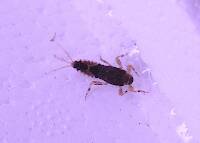
Blue-winged Olives
Baetis
Tiny Baetis mayflies are perhaps the most commonly encountered and imitated by anglers on all American trout streams due to their great abundance, widespread distribution, and trout-friendly emergence habits.
Featured on the forum

This one seems to lead to Couplet 35 of the Key to Genera of Perlodidae Nymphs and the genus Isoperla, but I'm skeptical that's correct based on the general look. I need to get it under the microscope to review several choices in the key, and it'll probably end up a different Perlodidae.

Troutnut is a project started in 2003 by salmonid ecologist Jason "Troutnut" Neuswanger to help anglers and
fly tyers unabashedly embrace the entomological side of the sport. Learn more about Troutnut or
support the project for an enhanced experience here.
This topic is about the Mayfly Species Hexagenia limbata
It starts like a rise of small trout. There are dimples on the surface--fingerling trout eating midges, perhaps. But these are no fish. The water breaks and out pop the yellow sails of a giant Hexagenia dun. Then another. And another. A vortex appears in a flash below the mayfly and it vanishes with a slurp so loud it echoes off the distant bank. A square tail like a shark fin breaks the surface behind the swirl as a brown trout twice the size of your net retreats back to his deeper lair. The Hex hatch is on.This Midwestern legend plays out every year on calm, dark, humid nights in early July. Anglers who only fly fish once a year drive hundreds of miles to play their part in the drama, while the mayflies themselves make the television news by showing up on doppler radar or calling snowplows out of dormancy to remove layers of Hexagenia (or "Hex") duns from the bridges. In the cold trout rivers of Wisconsin and Michigan, huge nocturnal brown trout whose usual menu consists of smaller brown trout become, for a week or so, prime dry fly quarry.
According to the literature, these are the second largest mayflies in the United States, behind the related Litobrancha recurvata flies. However, there are reports of limbata exceeding 40mm in some locales, which would make them the largest.
Example specimens
RedQuill27 on Nov 15, 2009November 15th, 2009, 10:19 am EST
The guy who posted this thread "SPINNER" has been kicked off all of the other Wisconsin Fly fishing Forums. He doesn't like the HEX hatch because it's too hard to imitate with a Panther Martin, Mepps or Crankbait.
Fishing is like sex, when its good its great, and when its bad its still pretty good.
Bombillo
Posts: 2
Posts: 2
Bombillo on Jul 5, 2016July 5th, 2016, 10:45 am EDT
If this doesn't look like some of the most fun a person could have with a fly rod I'll eat my drying patch. Check it out:
https://www.youtube.com/watch?v=Px2z9P2DIsM
https://www.youtube.com/watch?v=Px2z9P2DIsM
Quick Reply
Related Discussions
Topic
Replies
Last Reply
Re: On 6/15 these mayflies closed a bridge in Pennsylvania - What are they?
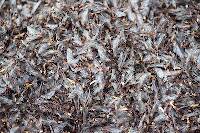
In the Identify This! Board by KennyBruin

In the Identify This! Board by KennyBruin
2
Jun 17, 2015
by KennyBruin
by KennyBruin
Re: For Fred's Post re: "What is the Big Deal about the Hex?"
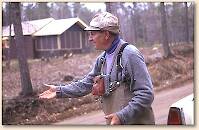
In the Photography Board by Oldredbarn

In the Photography Board by Oldredbarn
2
Sep 10, 2009
by Troutnut
by Troutnut
4
Apr 12, 2014
by Brookyman
by Brookyman



